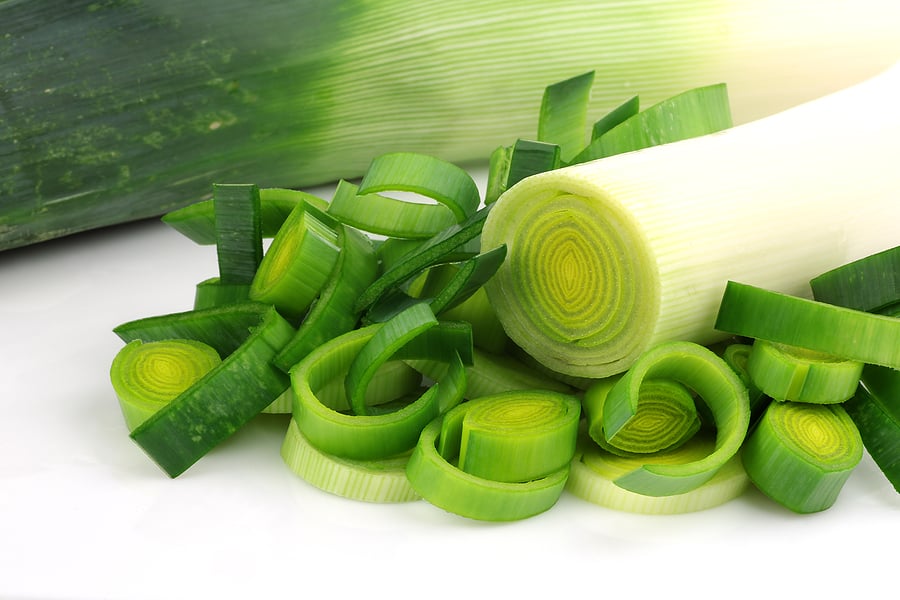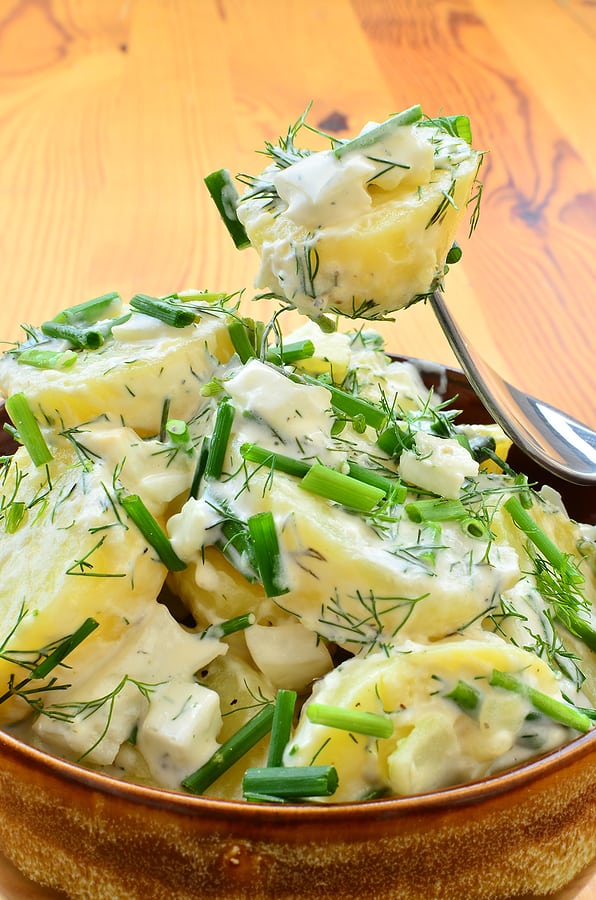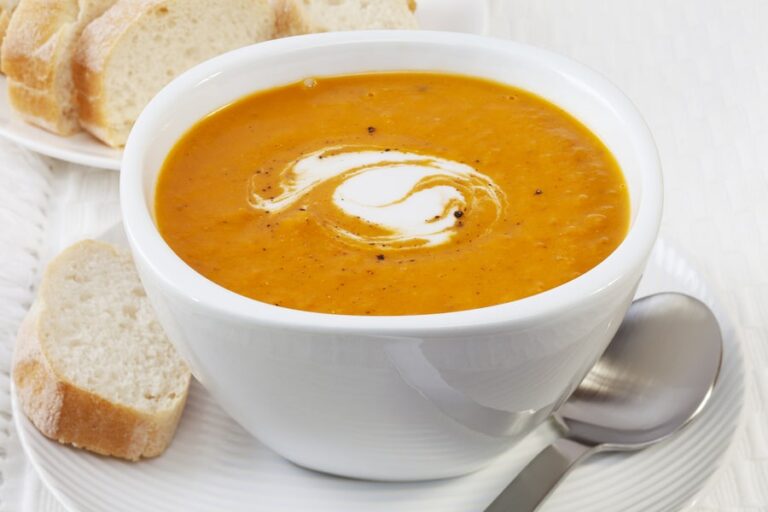Six Ways to Cook and Serve Leeks
Leeks have a mild, sweet onion flavor that’s both delicate and savory, making them a versatile star in the kitchen. Their tender white shanks add a subtle richness to soups, stews, and sauces, while their gentle sweetness shines when roasted, grilled, or sautéed in butter. Unlike sharper onions, leeks offer a smooth, mellow taste that enhances dishes without overpowering other ingredients, giving every meal a refined, garden-fresh flavor.
Leeks can be steamed, braised, grilled, and poached. You can also make leek au gratin and leek-potato soup.
The flavor and fragrance of leeks are more subtle, delicate, and sweeter than onions.
Three delicious ways to prepare leeks
Here are three delicious ways to prepare leeks with simple instructions:
Creamy Potato-Leek Soup
Ingredients:
- 3 large leeks (white and light green parts only)
- 2 medium potatoes, peeled and diced
- 2 tbsp butter
- 4 cups vegetable or chicken stock
- 1 cup heavy cream
- Salt and pepper to taste
- Optional: fresh chives for garnish
Instructions:
- Slice the leeks in half lengthwise and rinse thoroughly to remove any dirt. Slice thinly.
- Melt butter in a large pot over medium heat. Add leeks and sauté until soft, about 8-10 minutes.
- Add diced potatoes and stock. Bring to a boil, then reduce heat and simmer until potatoes are tender, about 15 minutes.
- Use an immersion blender (or transfer to a blender) to purée until smooth.
- Stir in heavy cream, season with salt and pepper, and heat gently.
- Serve hot, garnished with chives if desired.
Braised Leeks with Garlic and Thyme
Ingredients:
- 4 large leeks (white and light green parts only)
- 2 tbsp olive oil
- 2 garlic cloves, minced
- 1 cup vegetable or chicken broth
- 1 tsp fresh thyme leaves (or ½ tsp dried thyme)
- Salt and pepper to taste
Instructions:
- Slice the leeks in half lengthwise and rinse thoroughly to remove dirt. Trim ends but keep the pieces intact.
- Heat olive oil in a large skillet over medium heat. Add garlic and cook until fragrant, about 1 minute.
- Place leeks cut side down in the skillet. Add broth and thyme. Season with salt and pepper.
- Cover and simmer on low heat for 15-20 minutes, flipping halfway, until leeks are tender and lightly caramelized.
- Serve as a side dish, spooning any remaining pan juices over the leeks.
Leek and Gruyère Tart
Ingredients:
- 2 large leeks (white and light green parts only)
- 1 sheet puff pastry, thawed
- 1 tbsp butter
- ½ cup Gruyère cheese, grated
- 2 eggs
- ½ cup heavy cream
- Salt and pepper to taste
Instructions:
- Preheat oven to 375°F (190°C). Roll out the puff pastry on a baking sheet and prick it lightly with a fork.
- Slice the leeks thinly and sauté in butter over medium heat until soft, about 8-10 minutes.
- In a bowl, whisk eggs, cream, and a pinch of salt and pepper. Stir in the sautéed leeks and half the cheese.
- Pour the mixture onto the puff pastry, leaving a 1-inch border. Sprinkle the remaining Gruyère on top.
- Fold the edges of the pastry inward slightly. Bake for 25-30 minutes or until golden brown and set.
- Slice and serve warm as an appetizer or light meal.
Favorite leek recipe
Leeks cooking suggestions
- Leeks can be prepared much the same way as asparagus. They can be used in stocks, soups, stews, and poached or steamed. They should not be overcooked or they will become slippery and slimy.
- To ensure uniform cooking use similarly sized leeks.
- Braising or baking leeks allow 25 to 35 minutes.
- Simmer medium- to large-size whole leeks for 10 to 15 minutes; quarters, halves, or small whole leeks for about 5 minutes.
- Steam medium- to large-size whole leeks for 15 to 20 minutes; quarters, halves, or small whole leeks for about 10 minutes.
- Sauté or stir fry leeks for 3 to 5 minutes until they are tender and slightly brown around the edges. You do not need to use a coating or batter.
- Pan-fry or a deep-fat-fry leek in a wet batter until the crust is golden brown.
- Raw, finely chopped leeks are often added to salads—use in combination or as a substitute for onions, shallots or chives.
- Leek greens are often used to add flavor to broth, stews, and purees.
Also of interest:
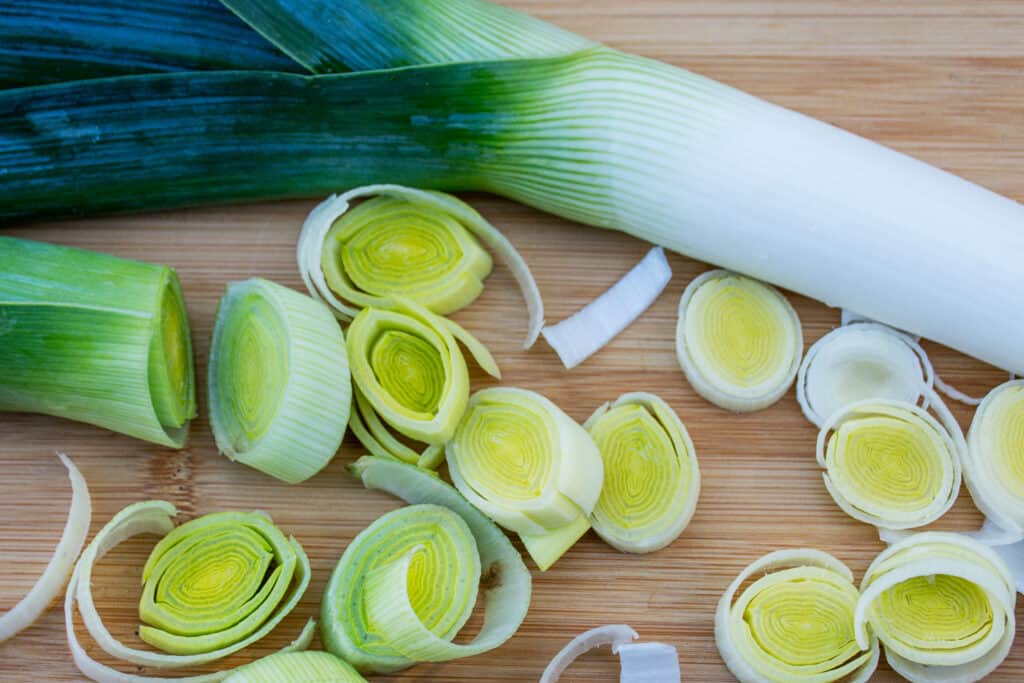
How to choose leeks
- Select leeks that are straight, firm, and intact with crisp, upright, brightly colored leaves and that have unblemished white portions.
- Smaller leeks will be most tender and flavorful.
- Avoid leeks with withered, limp or yellow-spotted leaves or those that have cracked or overly swollen bulbs.
- The white section and about 2 inches (5 cm) of the pale green portion are the desirable parts for cooking. If you bend the lower part of the pale section, it should give a little. If it doesn’t give, the leek has a woody heart that won’t soften during cooking.
How to store leeks
Leeks will keep in a plastic bag in the refrigerator for 3 to 5 days. Wrap them in a damp towel in an open plastic bag. They will keep for only 2 days after cooking, and they do not freeze well.

How to prep leeks for cooking
- Slit the leek from the top to the bottom lengthwise keeping the root intact and wash thoroughly to remove all dirt trapped between the leaf layers or soak leeks for 10 minutes in cold, salty water to destroy insects that might be hiding between the leaves. Rinse them gently to remove any dirt.
- Trim rootlets and leaf ends before using.
- Leeks can be cooked whole or sliced.
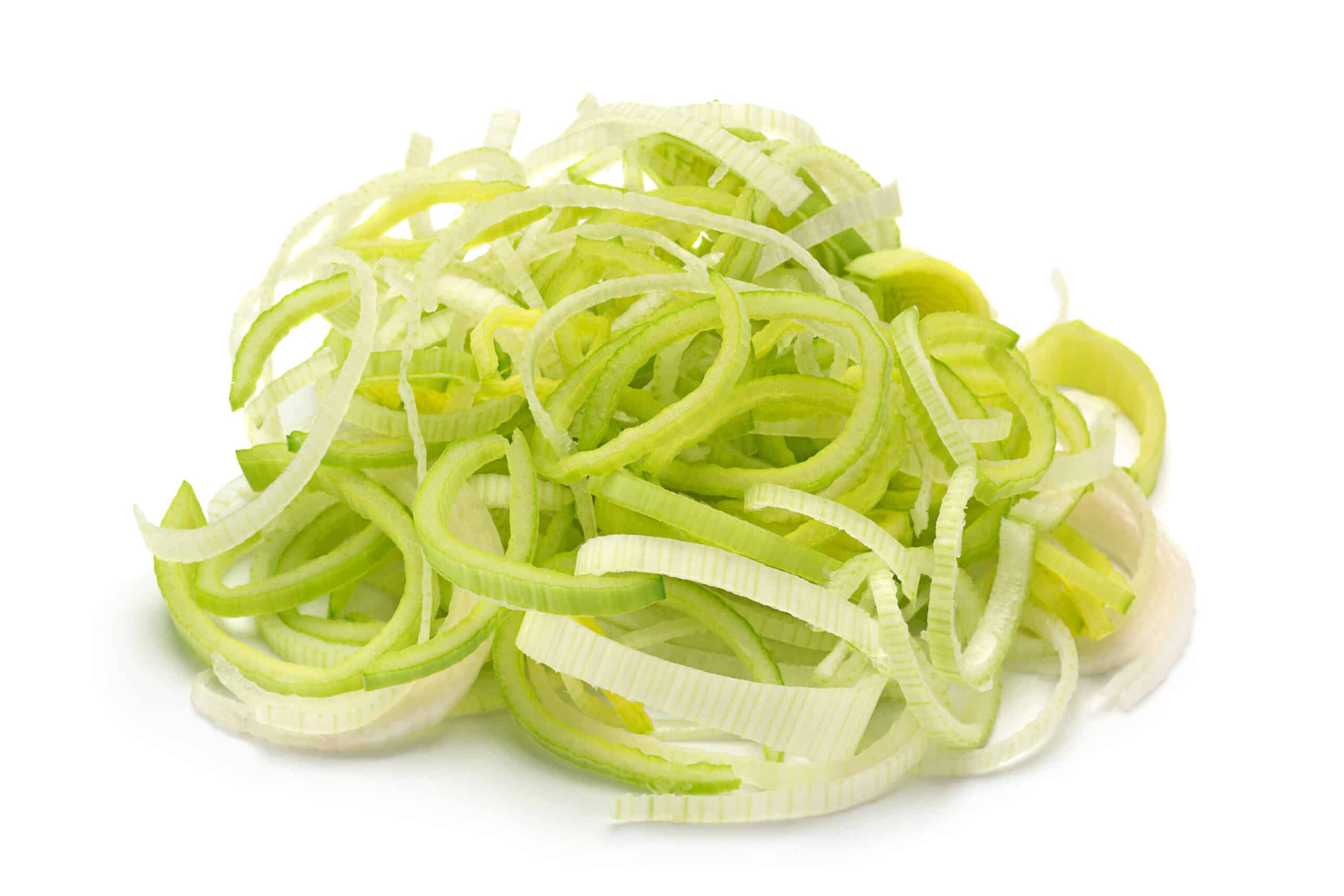
How to steam leeks
- Trim and clean the leeks. Leeks can be steamed whole or sliced.
- Place the leeks in a steamer over 1 inch of boiling water. Season with pepper or tarragon.
- Steam until the leeks are tender, about 10 minutes
- Transfer the leeks to a plate; drizzle with olive oil and lemon juice and add salt and pepper to taste.
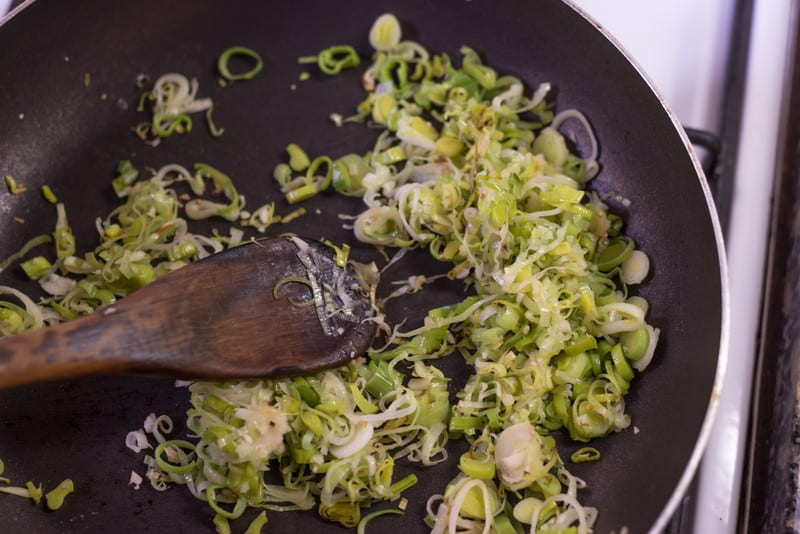
How to braise leeks
- Trim and clean the leeks.
- Coat the bottom of a skillet or saucepan with butter or olive oil and turn the heat to medium.
- When the butter melts or the oil is hot, add the leeks to the skillet in one layer.
- Add salt and pepper to taste.
- Cook the leeks on both sides, turning at least twice for about 5 minutes.
- Add a cup or slightly more of chicken or vegetable stock; turn the heat to low and cover the pan.
- Cook until the leeks are just tender, about 20 minutes.
- If there is excess liquid, uncover the pan and turn the heat up slightly to boil it away.
- Sprinkle with lemon juice and serve hot or at room temperature.
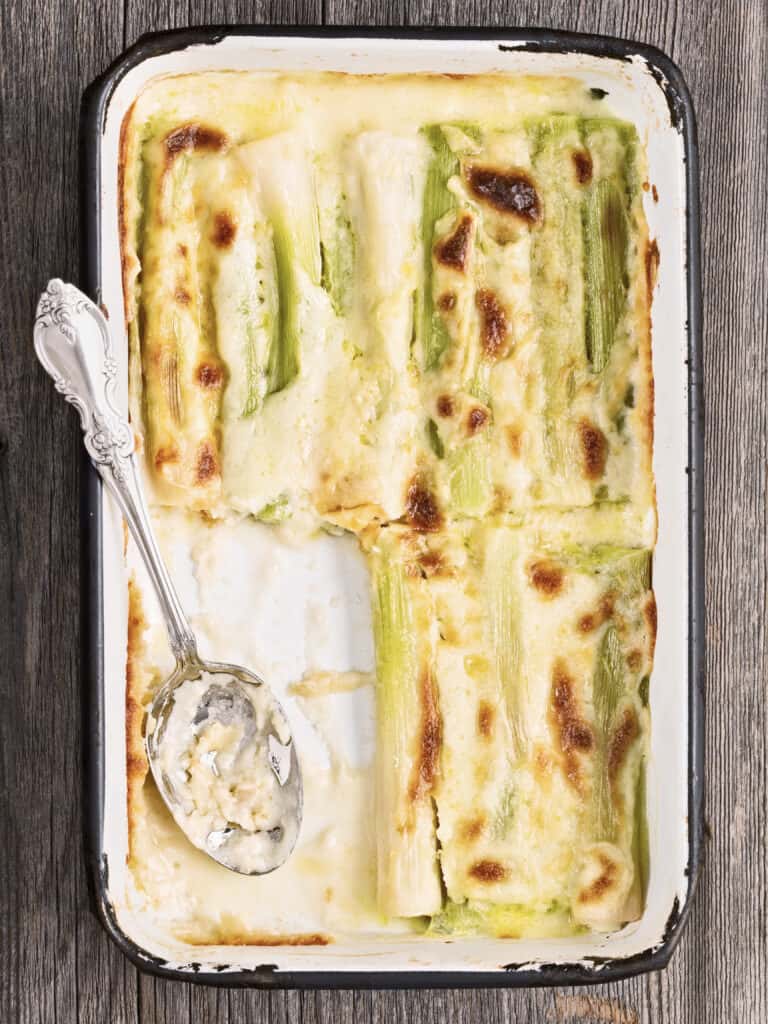
How to make leeks au gratin
- Use an oven-proof skillet and follow the directions above to braise the leeks.
- At the end (step 9 above), sprinkle with grated Parmesan cheese instead of lemon juice. Place the skillet in the oven until the cheese melts or just slightly browns.
How to grill leeks
- Preheat the grill so that is very hot.
- Brush the leeks lightly with olive and soil and sprinkle with salt and pepper to taste.
- Set the leeks directly on the grill; if they are thin place them in a grilling basket.
- Grill and turn until tender and brown all around, 5 to 15 minutes depending on the size of the leeks.
- Serve with vinaigrette or melted butter.
How to poach leeks
Poach leeks in a bouillon. Here are the ingredients for a bouillon made by Master Chef James Beard: 1/2 cup olive oil, 1/3 cup white wine vinegar, 1/3 cup dry white wine, 1 teaspoon salt, 1/2 teaspoon freshly ground black pepper, 1 bay leaf, 1 garlic clove peeled, a dash of Tabasco, a teaspoon dry thyme. Mix.
- Clean and trim the leeks.
- Put the bouillon in a large shallow pan or deep skillet and add the leeks.
- Add just enough water to cover the leeks.
- Bring the liquid to a boil very slowly over medium heat.
- Reduce the heat and poach until the leeks are just crisp-tender. Do not overcook.
- Remove from heat and let the leeks cool in the liquid
- When the leeks are cook transfer to a serving dish or place in a refrigerator container and serve chilled later.
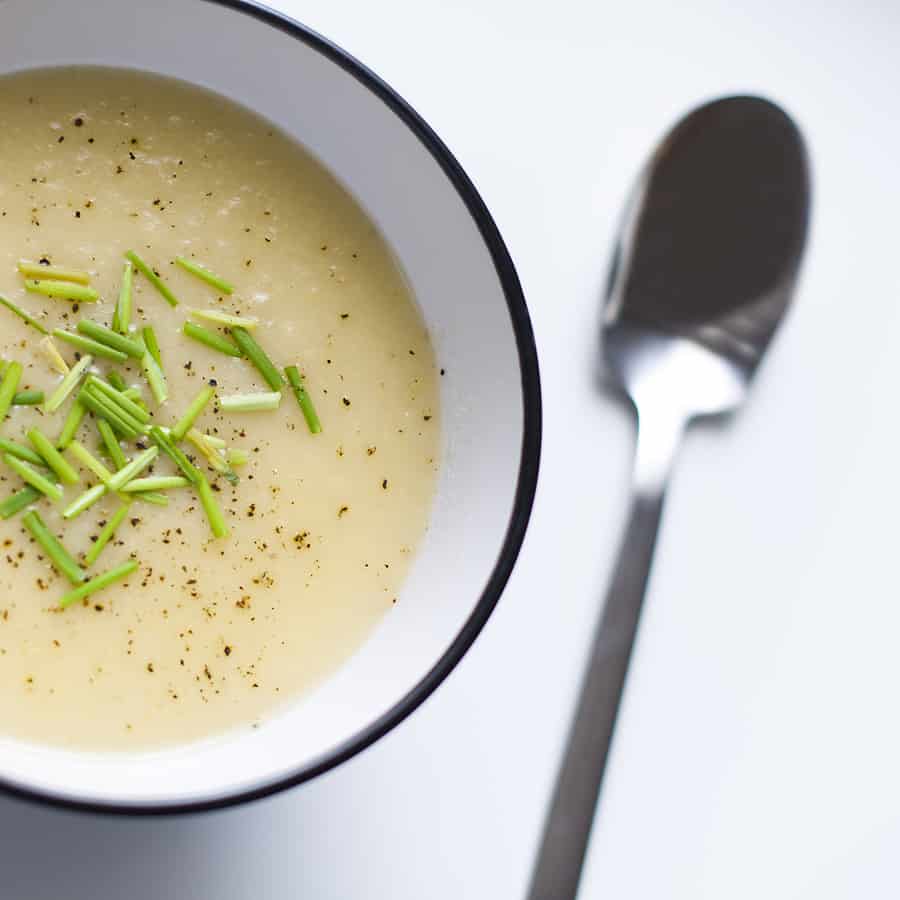
How to make leek and potato soup
- Here is a link: Leek and Potato Soup Recipe
Leeks flavor partners
- Leeks can be served with onions, tomatoes, pimiento, mushrooms, celery, sweet bell pepper, potatoes, bacon, ham, chicken, fish, mussels, vinaigrette, white wine or any combination of these.
- Season leeks with salt, pepper, garlic, tarragon, mustard, dill, marjoram, turmeric, savory, basil, paprika, oregano, mace, nutmeg, allspice, mint, parsley, sage, rosemary, or thyme.
Leeks nutrition
- Leeks are a good source of folic acid and a good source of iron and potassium. They also supply vitamin C, vitamin B6, magnesium, calcium, and copper.
- Leeks are low in calories and rich in vitamin A.
- If you have trouble digesting onions, leeks may be a good alternative.
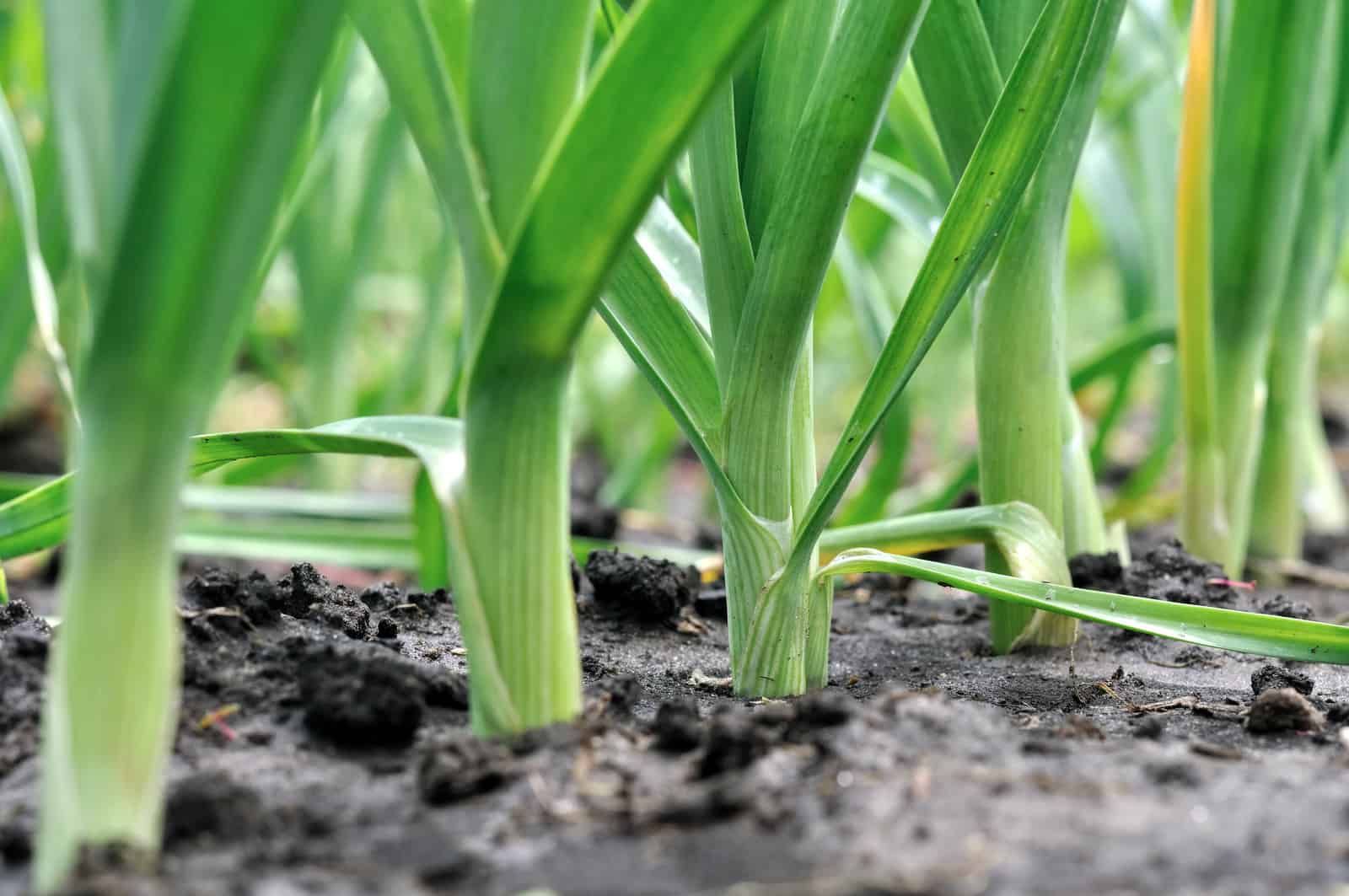
Get to know leeks
- The leek looks like a giant scallion with a thick white stalk that is cylindrical in shape and has a slightly bulbous root end. It can grow from 18 to 36 inches (45-90 cm) tall and the bulb is usually at least 1 inch (2.5 cm) in diameter.
- The tender part of the leek is the lower portion of the stalk—which is white and grows underground or is blanched white after being set in trenches or mounded during the growing process.
- The leaves are broad, flat, dark green, and wrapped tightly around each other much like a rolled newspaper.
- The leek is essential to many fine dishes—the popular cold soup vichyssoise—which has been made in France for centuries, the Scottish cock-a-leekie, and stews such as the French pot-au-feu.
- Leeks have been in cultivation since at least 300 BC and are thought to be native to the region stretching from Israel on the Mediterranean Sea to India and Central Asia. It is thought that ancient Phoenician traders introduced leeks to Britain and to the Celts and Welsh. (Leac was the Saxon term for any kind of onion or garlic (gar-leac).
- The ancient Egyptians held leeks in high esteem as did the ancient Romans, who considered leeks superior to both onions and garlic.
- Today, the leek is the national vegetable of Wales. The leading producers of leeks are France, Belgium, and the Netherlands.
The botanical name of the leek is Allium porrum.
Leeks Growing Hub
Start here: The Ultimate Leeks Growing Guide: From Seed to Harvest
Leek Basics & Varieties
- Short-Season vs. Long-Season Leeks: Key Differences and How to Grow Each
- Best Leek Varieties to Grow in Your Garden
- Leeks vs. Green Onions vs. Garlic Scapes: What’s the Difference?
Planting & Site Prep
- Leeks Seed Starting Tips
- When to Plant Leeks by USDA Zone
- Planting and Spacing Leeks for Healthy Growth
- The Best Companion Plants for Leeks and What to Avoid
Unique Growing Methods
- Hilling Leeks: How to Grow Long, White Stems
- Growing Leeks in Tubes: A Step-by-Step Method
- How to Grow Leeks in Containers or Pots
Care & Maintenance
- How to Water Leeks for Steady Growth
- Fertilizing Leeks: Feeding Tips for Bigger, Sweeter Stalks
- Leek Care Throughout the Growing Season
- How to Extend the Leek Harvest Into Winter
Pests & Diseases
Harvest & Beyond
- How to Harvest and Store Leeks
- How to Harvest Leeks for the Best Flavor
- Six Ways to Cook and Serve Leeks
Leeks articles on Harvest to Table:
How to Harvest and Store Leeks
Six Ways to Cook and Serve Leeks
Onion Family Growing Problems Troubleshooting
Articles of interest:
Best Herbs for Container Growing
Garden Planning Books at Amazon:
- Vegetable Garden Almanac & Planner
- Kitchen Garden Grower’s Guide Vegetable Encyclopedia
- Vegetable Garden Grower’s Guide
- Tomato Grower’s Answer Book
More kitchen tips:
Bring your harvest to the table. Kitchen prep tips and easy recipes for the vegetables you grow. Click below for vegetable prep and recipes you can use now.
- Almonds
- Apples
- Apricot
- Aprium
- Artichoke
- Arugula
- Asparagus
- Avocado
- Bamboo Shoots
- Banana
- Basil
- Beans, Dried
- Beans. Long
- Beans, Shell
- Beans, Snap
- Beets
- Bitter Melon
- Blackberry
- Bok Choy
- Broccoli
- Broccoli Raab
- Brussels Sprouts
- Cabbage
- Cardoon
- Carrots
- Cauliflower
- Celeriac
- Celery
- Chard
- Chayote Squash
- Cherimoya
- Cherries
- Chestnut
- Chickpea
- Chinese Cabbage
- Chives
- Cilantro
- Citron
- Clementine
- Collards
- Coriander
- Corn, Sweet
- Corn, Baby
- Corn Salad, Mache
- Cranberry
- Cress
- Cucumber
- Daikon
- Dandelion
- Dill
- Eggplant
- Endive, Belgian
- Endive and Escarole
- Fava Beans
- Fig
- Florence Fennel
- Garlic
- Ginger
- Grapefruit
- Grapes
- Guava
- Horseradish
- Jerusalem Artichoke
- Jicama
- Jujube
- Kale
- Kiwifruit
- Kohlrabi
- Kumquat
- Leeks
- Lemongrass
- Lemons
- Lettuce
- Lime
- Mache (Corn Salad)
- Mandarin Orange
- Mango
- Maple Syrup
- Marjoram
- Melons
- Michihili
- Mint
- Mizuna
- Mushrooms
- Mushrooms, Cremini
- Mustard Greens
- Napa Cabbage
- Nectarine
- Okra
- Olives
- Olive oil
- Onions
- Oranges
- Oregano
- Parsley
- Parsley Root
- Parsnips
- Passion Fruit
- Pawpaw
- Peaches
- Pears
- Peas, Garden Snap
- Peas, Snow
- Pei Tsai
- Peppers, Chili
- Peppers, Sweet
- Persimmon
- Pineapple
- Pineapple Guava
- Plantain
- Plums
- Pluots
- Pomegranate
- Potatoes
- Prickly Pear
- Pumpkin
- Quince
- Radicchio
- Radishes
- Raspberries
- Rosemary
- Rhubarb
- Rutabaga
- Sage
- Salsify
- Sauerkraut
- Savory
- Shallots
- Sorrel
- Spinach
- Squash, Summer
- Squash, Winter
- Strawberries
- Sunchokes
- Sunflower
- Sweet Potato
- Swiss Chard
- Tangerine
- Taro
- Tarragon
- Thyme
- Tomatillo
- Tomato
- Turnip
- Turnip Greens
- Yams

